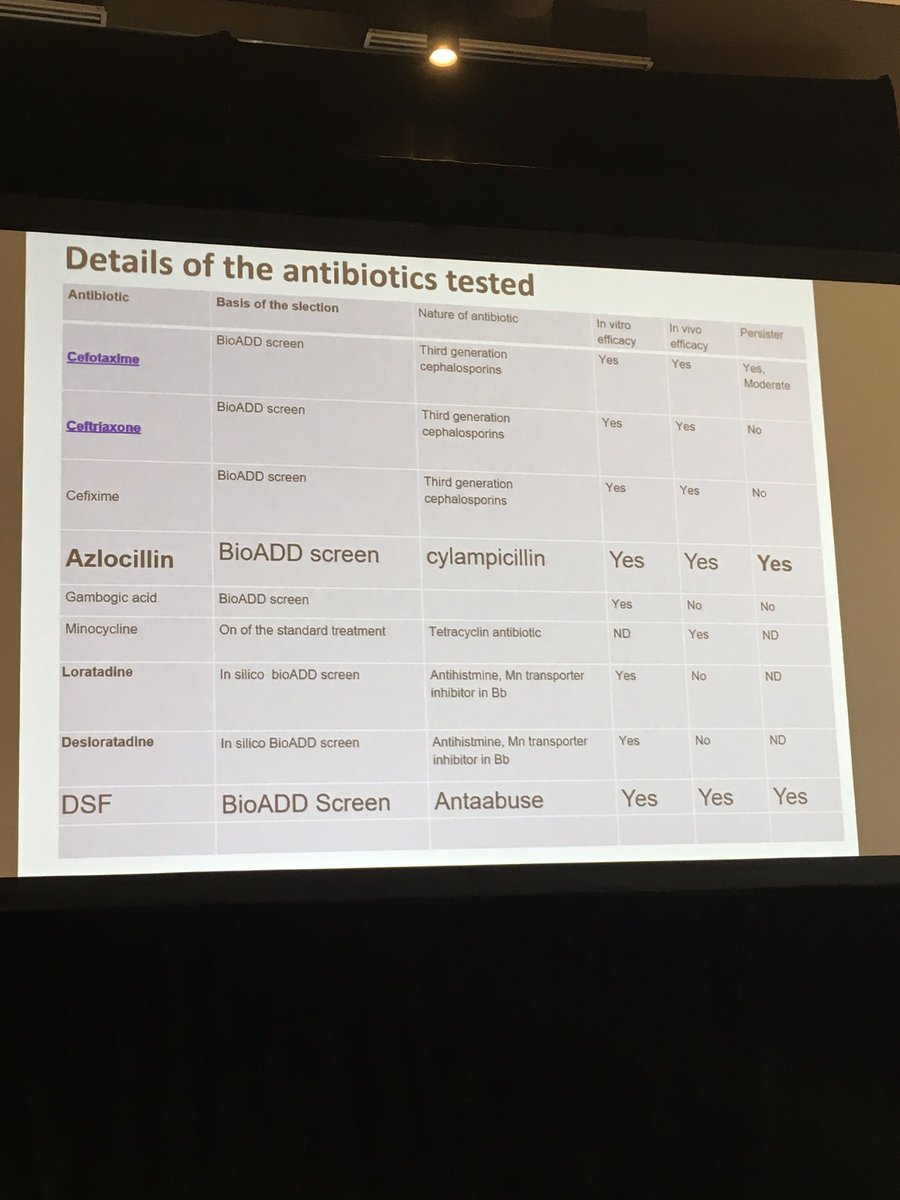Jayakumar Rajadas, PhD @StanfordMed | use of Disulfiram for the treatment of unresolved Lyme infections and associated detrimental host immune response. A silver bullet? #LivLymeSummit @liv_lyme 

@StanfordMed @liv_lyme Rajadas | Identification of new drug candidates against Borrelia burgdorferi using high-throughput screening. #LivLymeSummit ncbi.nlm.nih.gov/pmc/articles/P…
Rajadas | giving a nice thank you to his collaborators. Funding by @liv_lyme & @BayAreaLyme Zhang @JohnsHopkinsSPH Embers @Tulane, Kenneth Liegner, MD & others. #LivLymeSummit 

@liv_lyme @BayAreaLyme @JohnsHopkinsSPH @Tulane Rajadas | minimally 10-20% of Lyme patients develop a chronic, painful condition. It is very real. It affects the heart, the joints and the nervous system. #LivLymeSummit
@liv_lyme @BayAreaLyme @JohnsHopkinsSPH @Tulane Rajadas | Characterization of Brain Dysfunction Induced by Bacterial Lipopeptides That Alter Neuronal Activity and Network in Rodent Brains. #LivLymeSummit jneurosci.org/content/38/50/…
Rajadas | these Borrelia burgdorferi lipopeptide aggregates cause inflammation in the brain. #LivLymeSummit 



Rajadas | Screening of NCI-DTP library to identify new drug candidates for Borrelia burgdorferi. #LivLymeSummit nature.com/articles/ja201…
Rajadas | Currently conducting mouse trial with Disulfiram. Acting as an bactericidal. Effects all these components of B.b. 👇 #LivLymeSummit 

Rajadas | "Disulfiram is a simple molecule, as simple as asprin" "I like Disulfiram because it is not an antibiotic and will not destroy the microbiome." "Disulfiram is dangerous around alcohol, and alcohol is found everywhere [handwash, foods, meds, etc]" #LivLymeSummit
Rajadas | Finding Disulfiram has
bactericidal activity against Borrelia persister cells. (Also appears to have activity against Bartonella & Babesia) Unlike Doxycycline which is bacteriostatic. #LivLymeSummit
bactericidal activity against Borrelia persister cells. (Also appears to have activity against Bartonella & Babesia) Unlike Doxycycline which is bacteriostatic. #LivLymeSummit

Rajadas | Also testing Azlocillin sodium in the lab. Seeing 100% kill of all phases of Borrelia in the laboratory. #LivLymeSummit
Rajadas | List of full antibiotics tested. Disulfiram was best in the mouse model. #LivLymeSummit 



Rajadas | IN SEARCH OF A CURE FOR LYME DISEASE: THE DISULFIRAM STORY by @BonnieCrater @BayAreaLyme
bayarealyme.org/blog/in-search…
bayarealyme.org/blog/in-search…
• • •
Missing some Tweet in this thread? You can try to
force a refresh







